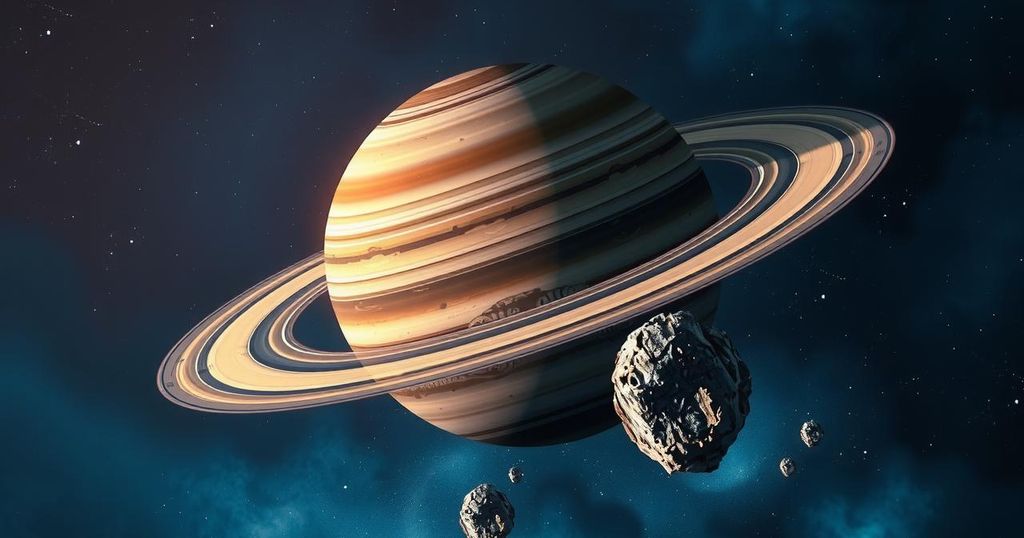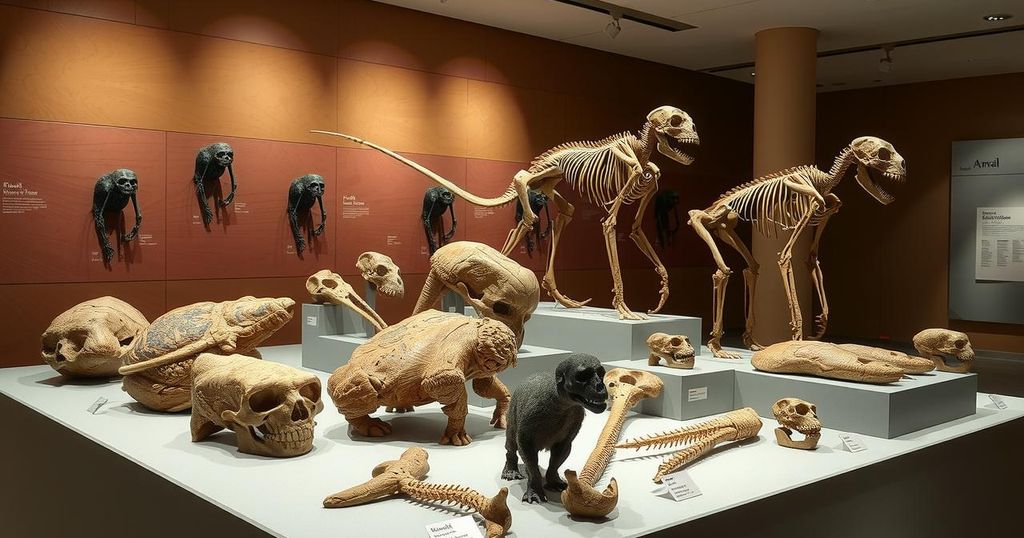Science
ACHILLES, ANNIVERSARY, AR, ARCHAEOLOGY, CANADA, COM, ENTERTAINMENT, FOSSILS, HAWAII, JUPITER, KEN CROSWELL, MACAU UNIVERSITY OF SCIENCE AND TECHNOLOGY, MAN, NASA, NEPTUNE, NORTH AMERICA, PALEONTOLOGY, PAUL WIEGERT, SCIENCE, TO HUI, UNITED STATES, UNIVERSITY OF SCIENCE AND TECHNOLOGY, UNIVERSITY OF WESTERN ONTARIO
Amina Hassan
0 Comments
Saturn’s First Trojan Asteroid Finally Discovered
Saturn’s first Trojan asteroid, named 2019 UO14, has been discovered, uniting all four giant planets with known Trojan asteroids. This asteroid lies 60 degrees ahead in orbit and is estimated to have a temporary stable path due to gravitational influences nearby. Scientists believe more Saturnian Trojans likely exist but are yet to be uncovered.
The astronomical community is buzzing with excitement as Saturn has officially joined the ranks of the giant planets with its first Trojan asteroid discovered. This means that all four gas giants now share the distinction of having celestial neighbors in similar orbits around the sun. Paul Wiegert, an astronomer at the University of Western Ontario, explains the significance: “Saturn was sort of the odd man out…because even though it’s the second most massive planet in the solar system, it didn’t have any Trojans.”
This newly found asteroid, designated 2019 UO14, orbits about 30 years around the sun and is situated 60 degrees ahead of Saturn. Its existence aligns with the behaviors of previously found Trojan asteroids that orbit alongside Jupiter, Uranus, and even the smaller planets like Earth and Mars. The first Trojan, known as Achilles, was discovered back in 1906, establishing a lineage that has now flourished into a catalog of thousands.
Astronomers have always suspected Saturn had some Trojans hanging out, but until now, that was just speculation. The journey to validate 2019 UO14 began in earnest after a 2019 telescope image from Hawaii caught the asteroid’s glint, with amateur astronomer Andrew Walker suggesting it might be a Saturnian Trojan. Following that tip-off, Wiegert and his colleagues embarked on a mission to further investigate, analyzing multiple observations from various telescopes spanning several years.
Man-To Hui, an astronomer from Macau University, played a crucial role in pinpointing the asteroid’s elusive orbit, resulting in confirmation of its Trojan classification. At about 13 kilometers wide, it closely resembles Deimos, one of Mars’ moons. “The key to getting a good orbit… is having a lot of observations of it through different telescopes over a long period of time,” says Wiegert.
However, potential instability looms over this newly discovered Trojan. Carlos de la Fuente Marcos, an astronomer at Complutense University of Madrid, emphasizes that Saturn’s Trojans might face tricky orbits due to the gravitational pull from neighboring giants like Jupiter, which could jeopardize their position over time. The estimate indicates that 2019 UO14 has only been stable in its Trojan role for about 2,000 years, with forecasts suggesting it could remain for just another millennium.
There is a sense among astronomers that 2019 UO14 could be merely the first of a few, if not more, Trojan asteroids associated with Saturn. Wiegert’s confidence reflects that sentiment: “I’m quite sure there are more — maybe only a few, but this can’t be the only one.” If true, this discovery could just be the tip of the iceberg for Saturnian studies.
In summary, the discovery of Saturn’s first Trojan asteroid marks a significant milestone in planetary astronomy, bridging Saturn with its larger cohort of gas giants. With an orbit confirmed in relation to both the sun and Saturn, this small body highlights ongoing research into the complex dynamics of the solar system. And intriguingly, experts believe there may be others like it waiting to be found, promising even more insights into Saturn’s mysterious orbiting companions.
Original Source: www.sciencenews.org




Post Comment